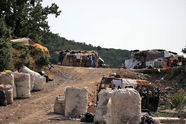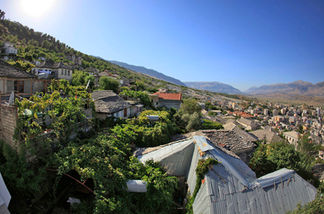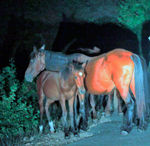Albania-3
Butrint, Palasë, Gjirokastër, Blue Eye Spring, Kor�çë
Butrint
The ancient ruins of Butrint, 18km south of Saranda, are famed for their size, beauty and tranquillity. They're in a fantastic natural setting and are part of a 29-sq-km national park. The remains – Albania's finest – are from a variety of periods, spanning 2500 years. www.lonelyplanet.com
Buthrotum (Butrint) was a city of the Greek tribe of the Chaonians, later a Roman colony and a bishopric. It entered into decline in Late Antiquity, before being abandoned during the Middle Ages after a major earthquake flooded most of the city. https://en.wikipedia.org/wiki/Buthrotum
Palasë
Palasë is a village close to the Llogara National Park in the Albanian Riviera. It is located in the municipality of Himarë (13 kilometres from the town), in the Vlorë County, Albania. The inhabitants of Palasë speak mainly a variant of the Himariote Greek dialect, and partly the Tosk Albanian dialect.
Gjirokastër is a city in southern Albania, on a valley between the Gjerë mountains and the Drino, at 300 metres above sea level. Its old town is a UNESCO World Heritage Site, described as "a rare example of a well-preserved Ottoman town, built by farmers of large estate". https://en.wikipedia.org
Defined by its castle, roads paved with chunky limestone and shale, imposing slate-roofed houses and views out to the Drina Valley, Gjirokastra is a magical hillside town described beautifully by Albania's most famous author, Ismail Kadare (b 1936), in Chronicle in Stone. There has been a settlement here for 2500 years, though these days it's the 600 'monumental' Ottoman-era houses in town that attract visitors. www.lonelyplanet.com
Gjirokastër

Blue Eye Spring
The Blue Eye is a water spring and natural phenomenon occurring near Muzinë in Vlorë County, southern Albania. A popular tourist attraction, the clear blue water of the river bubbles forth from a stunning, more than fifty-metre-deep pool. Divers have descended to fifty metres, but it is still unclear what the actual depth of the karst hole is.
Korçë
Korçë, city, southeastern Albania. It began as a feudal estate in the 13th century, and in 1484 the local lord, Koja Mirahor İlyas Bey, a Muslim convert active in the Ottoman siege of Constantinople (1453; now Istanbul), returned to the site and built the mosque that bears his name.



























































































